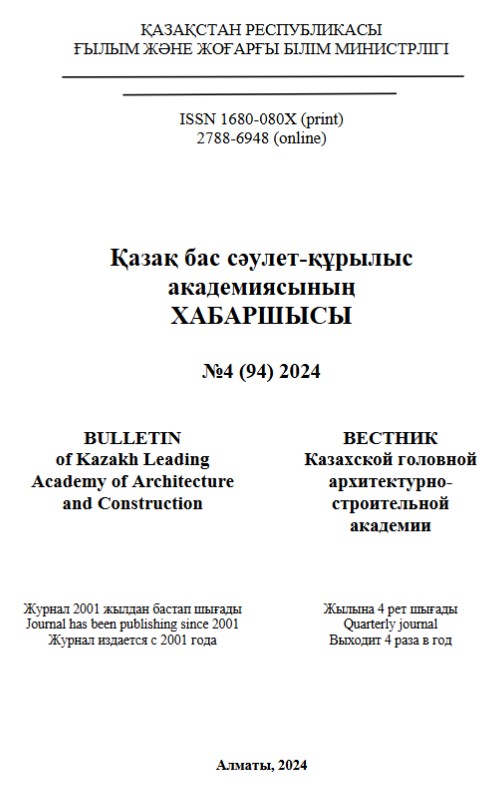Abstract
In the modern world, digital technologies play a key role in the development of architecture, especially in the context of striving for sustainable development, which was the reason for studying this concept within Kazakhstan. A region located at the crossroads of tradition and innovation, where the state is on the path of introducing digital innovations into architectural design and beyond, while preserving its rich cultural heritage. This study examines how digital technologies can contribute to the creation of eco-friendly and functional architecture in Kazakhstan, focusing on the benefits of artificial intelligence, building information modeling (BIM), 3D printing, as well as virtual and augmented reality. The use of these technologies makes it possible to more accurately plan and implement architectural projects, taking into account the natural and climatic conditions, socio-economic requirements and the cultural and historical context of the region. Special attention is paid to the analysis of the resource potential of various regions of Kazakhstan, which makes it possible to optimally use local resources and integrate architectural objects into the existing landscape, while preserving their uniqueness and identity. Thus, digital technologies open up new opportunities for creating sustainable and effective architectural solutions that not only meet modern requirements of comfort and safety, but also contribute to the preservation of the environment. The study emphasizes the importance of integrating new technologies, taking into account cultural and historical aspects, which allows for the harmonious development of architecture in Kazakhstan. In conclusion, the authors emphasize that in what way digital technologies improve the quality of architectural projects, and make a significant contribution to the development of sustainable architecture, developing the concept of green construction, which comprehensively combine innovation and tradition. This approach of the concept provides the basis for further development of architecture in Kazakhstan aimed at achieving high standards of sustainability and quality of life.

